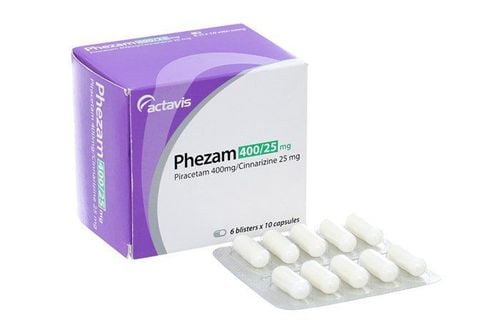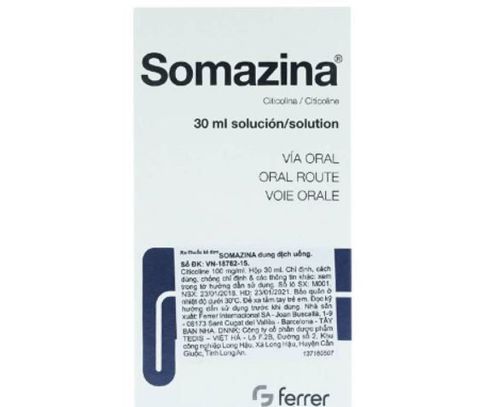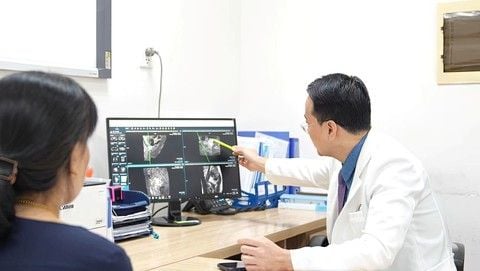Many individuals experiencing headaches and dizziness mistakenly attribute these symptoms to cerebral ischemia and self-medicate with drugs that enhance cerebral circulation. This is a misconception that can result in dangerous side effects.
1. What Is Cerebral Ischemia?
Although the brain constitutes only 2% of total body mass, it demands approximately 20% of the cardiac output, 25% of systemic oxygen consumption, and 25% of circulating glucose to sustain its normal physiological functions. Any disruption in cerebral perfusion can precipitate ischemic events, impairing neuronal activity.
Several pathological conditions can compromise cerebral blood flow, including arterial stenosis due to atherosclerosis, cardiovascular disorders, and neurovascular dysfunction. If cerebral circulation ceases for approximately six seconds, syncope may occur. However, if perfusion is interrupted for five minutes, neuronal necrosis ensues, potentially leading to irreversible neurological deficits. Considering these risks, individuals should take cerebral ischemia seriously and seek professional medical evaluation rather than resorting to self-medication.
2. What Are the Symptoms of Cerebral Ischemia?
Clinical manifestations of cerebral ischemia include:
- Cephalalgia, vertigo, and presyncope
- Ataxia, postural instability, and increased fall risk
- Paresthesia and neuromuscular fatigue
- Visual impairment and cognitive decline
- Insomnia
- Syncope
These clinical manifestations may be transient, resolving within minutes, or persist for a prolonged duration before subsiding. Without precise diagnosis and prompt medical intervention, recurrent ischemic episodes can lead to progressive neurological impairment, substantially diminishing quality of life and increasing the risk of cerebrovascular events such as stroke.

3. Cerebral Circulation-Enhancing Medications
Cinnarizine: is a selective calcium channel antagonist that mitigates vasoconstriction induced by vasoactive mediators such as adrenaline and serotonin. Consequently, it facilitates cerebral vasodilation and optimizes cerebral perfusion. However, its administration is associated with adverse effects, including gastrointestinal disturbances, epigastric discomfort, and excessive somnolence. In elderly patients, prolonged use is contraindicated due to an increased susceptibility to extrapyramidal syndromes, which may occasionally present alongside depressive manifestations.
Piracetam: Piracetam exerts neuroprotective effects through multiple mechanisms, including neurotransmitter modulation, attenuation of oxidative stress, and mitochondrial function enhancement. It influences key neurotransmitter systems such as dopamine, acetylcholine, and noradrenaline while also inhibiting the excessive release of excitatory amino acids like glutamate and aspartate under stress conditions. A crucial aspect of piracetam’s action is its ability to improve glucose utilization in the brain independent of oxygen availability, thereby sustaining ATP production and neuronal energy metabolism. Furthermore, it facilitates post-hypoxic neuronal recovery by optimizing mitochondrial function, enhancing phosphate metabolism, and modulating apoptotic pathways by reducing lactate accumulation. Notably, piracetam has been demonstrated to improve mitochondrial efficiency and augment ATP synthesis, contributing to its neuroprotective properties. Piracetam mitigates neuronal injury and supports cognitive function by reducing oxidative stress, modulating excitatory neurotransmission, regulating apoptosis, and enhancing mitochondrial efficiency. However, potential side effects include nausea, vomiting, gastrointestinal discomfort, diarrhea, agitation, and restlessness, which can often be managed through dose adjustments.
Cerebrolysin: Cerebrolysin is capable of crossing the blood-brain barrier and directly influencing neuronal function. It exerts multiple neurotrophic effects, including neuronal proliferation, differentiation, functional regulation, and cerebral blood flow enhancement. Additionally, it provides neuroprotection against ischemic damage. Clinically, Cerebrolysin is commonly indicated for patients with cognitive impairment, attention deficits, vascular dementia, cerebral infarction, or stroke-related neurological deficits.
Ginkgo Biloba Extract: Derived from Ginkgo biloba leaves, this extract contains flavonoids with potent antioxidant properties that neutralize free radicals, enhance catecholamine release, prevent cellular membrane degradation, and maintain cerebral metabolic processes. These include glucose uptake and electrolyte balance under ischemic conditions. It primarily manages cerebrovascular insufficiency, dementia, and memory impairment.
Saponins: Saponins, naturally found in the roots of Polyscias fruticosa, are known to enhance memory and bolster systemic immunity.
4. Is Self-Medication with Cerebral Circulatory Enhancers Advisable?
Many individuals experiencing headaches mistakenly attribute their symptoms to cerebral hypoperfusion and subsequently self-medicate with cerebrovascular-enhancing or nootropic agents without consulting a specialist. However, the inappropriate use of these medications without medical supervision may increase the likelihood of adverse drug reactions, some of which can be severe.
In reality, symptoms such as headaches, dizziness, and vertigo may appear from various underlying conditions, including vestibular dysfunction and neuropsychiatric disorders, rather than cerebral ischemia alone. Therefore, patients should seek professional evaluation to accurately diagnose the etiology of their symptoms and receive appropriate therapeutic interventions.
Following clinical assessment, physicians determine the appropriate pharmacological regimen and dosage based on the type and severity of cerebral hypoperfusion. Nonetheless, some individuals attempt to escalate the dosage, believing that enhanced cerebral circulation will improve cognitive performance, including memory and concentration. This assumption is fundamentally flawed.
Even nootropic agents perceived as cognitive enhancers—such as piracetam and Ginkgo biloba—primarily restore cognitive function in patients with cerebrovascular impairment instead, such as piracetam and Ginkgo biloba extract, do not augment cognitive function beyond the baseline. Instead, they primarily aid in restoring cognitive deficits secondary to cerebrovascular insufficiency. Unsupervised dose escalation or the use of these agents in individuals without underlying pathology may result in unintended consequences, including fatigue, insomnia, and gastrointestinal disturbances. Therefore, medical supervision is imperative to ensure safe and effective use.

5. Precautions When Using Cerebral Circulatory Enhancers
- Patients should never self-medicate with cerebrovascular enhancers without a physician’s prescription. If these medications are indicated, adhering to the prescribed dosage and avoiding arbitrary dose adjustments is crucial.
- In cases of cerebral ischemia, agents such as piracetam and cerebrolysin are utilized for neuroprotection. Physicians typically discontinue these medications once the therapeutic objective of safeguarding neuronal integrity is achieved. However, some individuals mistakenly consider them as general cognitive enhancers and continue self-administration, which yields no additional benefit and may even cause potential harm.
- Caution is warranted when using cerebrolysin and piracetam in patients with renal impairment, as these drugs are eliminated via the kidneys. Additionally, cerebrolysin and Ginkgo biloba extract should be prescribed with caution in patients with hypertension. Notably, Ginkgo biloba extract is contraindicated in hyperthyroidism, while piracetam should not be used in patients with hepatic dysfunction.
- When using drugs, pay attention to adverse interactions. For example, cinnarizine can increase the effectiveness of antihistamines, sedatives, and alcohol. Cerebrolysin increases the accumulation of MAOIs and antidepressants. Ginkgo biloba has the risk of increasing blood pressure when used with MAOIs.
- Throughout treatment, patients should be vigilant for adverse drug reactions and promptly report them to their physician for appropriate management. Possible side effects include epigastric pain, gastrointestinal disturbances, sleep disorders, extrapyramidal symptoms, agitation, restlessness, or depressive signs/symptoms.
Beyond pharmacotherapy, patients should adopt a balanced diet, limit stimulant consumption, and engage in regular physical activity as tolerated to promote circulation and optimize cerebral perfusion.
Cerebral ischemia is a serious medical condition, and patients experiencing symptoms of chronic cerebral ischemia should seek specialist evaluation to identify the underlying etiology and establish an effective treatment regimen. Self-medicating with cerebrovascular enhancers may not only fail to improve the condition but also increase the risk of severe adverse effects.
For more health-related insights on nutrition, wellness, and disease management, visit the Vinmec International General Hospital website to safeguard your well-being and that of your family.
To arrange an appointment, please call HOTLINE or make your reservation directly HERE. You may also download the MyVinmec app to schedule appointments faster and manage your reservations more conveniently.








